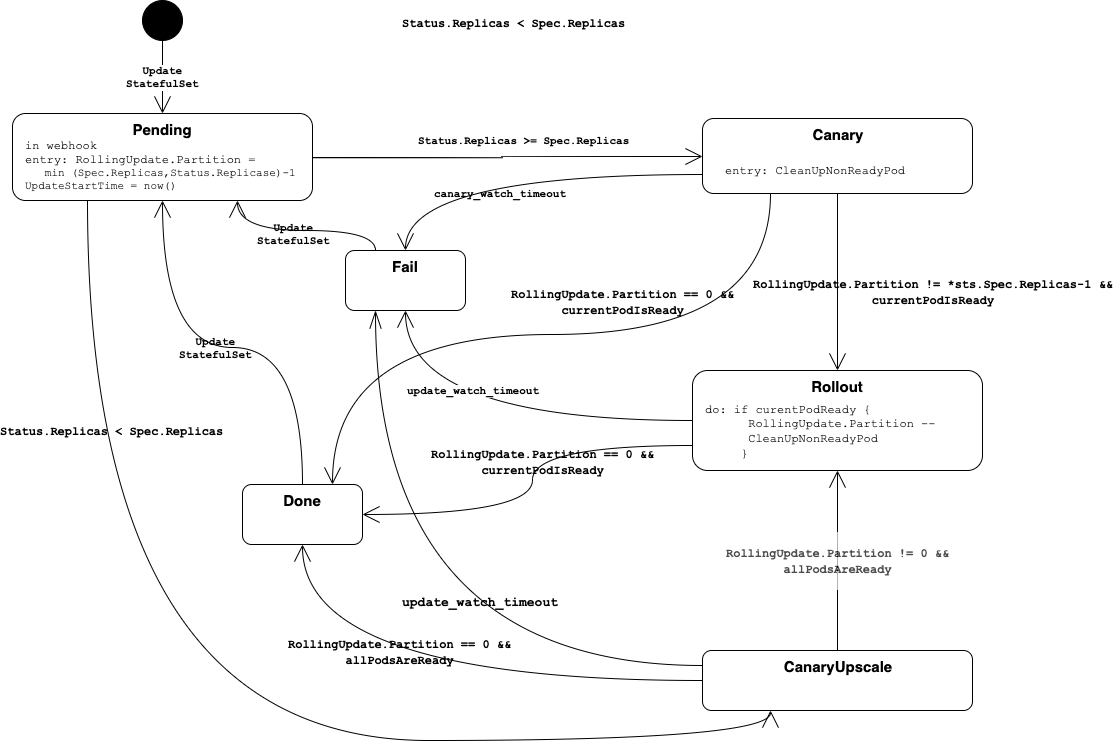StatefulSet Rollout
Motivation
The former implementation use a new StatefulSet for each new version of a manifest. This had the following drawbacks:
- Update on a cluster with multiple nodes was not working. When the new pods were started on a different node, the volume was blocked by the old pod.
- On a single node cluster this was also not working, if the workload (e.g. mysql) was using a lock on the volume on file-system level.
Why standard K8s StatefulSet is not sufficient
- Out-of-order updates are possible when e.g. a pod/node crashes.
- Recovering from a failed deployment is not possible with the standard kubernetes
StatefulSetcontroller. - There is no timeout when the new deployment is rolled out and is stuck.
Statemachine
This controller implements the following state machine

Known Limitations
CanaryUpscale
During upscale, there is no real canary behaviour implemented.
If a StatefulSet is scaled from 3 to 5 replicas, the state changes to CanaryUpscale and Partition is set to 2.
The k8s statefulset controller creates the 2 missing instances.
If all instances are ready the controller switches to state Rollout and continues as usual.
Due to the fact that more than 1 instance might be updated in state CanaryUpscale, the update-watch-time is used as timeout.
Single Replica
The former implementation was starting a second pod during the update before shutting down the old one. This is no longer possible as the name of the pod won’t change and results in a downtime.